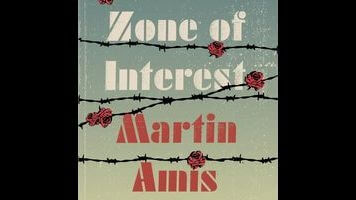Martin Amis looks at the domestic life of a Nazi in The Zone Of Interest

Martin Amis provides a clue—a few pages into the “Acknowledgments And Afterword” for his 15th novel, The Zone Of Interest—as to why this novel was written. The author points out, “He has so far gone unnamed in this book; but now I am obliged to type out the words ‘Adolf Hitler.’” He mentions that the man “seems slightly more manageable, somehow, when escorted by quotation marks.” More tellingly, Amis remarks that no one, not a historian (and, perhaps, no novelist) “claims to understand him.” Here, Amis reveals what the reader might have come to suspect after enduring the often excruciating narrative that precedes these afterthoughts: “We know a great deal about the how—about how he did what he did; but we seem to know almost nothing about the why.”
The “why” is what Amis is after in The Zone Of Interest. If he has arrived at some approximation of an answer, it is the author’s alone. The reader is left to wonder, exactly, what it was all about; the “why” is aimed at the novel itself as much as the history it has chosen to resurrect in fiction. Amis has tackled this subject previously, in Time’s Arrow, a novel told in reverse from the perspective of a Nazi doctor. Considered alongside The Zone Of Interest, it appears Amis is using angles (as a photographer might), inhabiting characters as ways of seeing, in a hopeful effort to uncover some forensic clue left behind by all others who have preceded his own awful inquiry.
This time, Amis moves among multiple narrators, training different perspectives on the daily lives of those condemned to both work and die in Auschwitz. Commandant Paul Doll is drawn comically, a pill-popping Nazi without conscience who swills booze and bellows irascibly about the complications that trip up the efficiency of his operation as if he might be the floor manager of a widget factory, instead of a mass murderer. His mania is further fueled by his mercurial wife, Hannah, object of an obsessive kind of affection to many, most notably Angelus “Golo” Thomsen, whose slippery manner paints him more as an opportunist than truly lovelorn.
All three narratives, Doll’s most of all, are peppered with dismayingly casual observations of unimaginable events. After being charged with the influx of prisoners to the Buna-Werke, Commandant Doll’s frequent mismanagement of transports leads to his professional decline, while Hannah’s secrecy fuels his paranoia. She listens to the radio, cheering on the defeat of Germany. Her maddening betrayal of country and marriage coalesce to transform her husband into some unholy fool, a bright, bumbling cartoon in a desolate, monochromatic landscape. Amis is not so much daring the reader to laugh at him (or with him) as he is imagining himself into a cocoon of normalcy where the Nazis went about their daily lives. The ceremony of domesticity, the foreboding smokestacks beyond the windowpanes, the smell—these are experienced in the Doll household with as much shrugging passivity as if they were merely living in a cheerless neighborhood.
No book is required to provide a likable narrator—or even a likable character. Likability is not a necessary component of literature. Yet, Amis does his best here to provide one through the perspective of Szmul, a Jew condemned to live. His survival is the sole compensation for his job. In the employ of Commandant Paul Doll, he is charged with leading fellow Jews to their deaths. In Szmul’s pages, the frail prisoner, vacated of any remaining rationality, begins to ask questions. If Amis sought to approach the “why” by way of composing The Zone Of Interest, it is worth noting that questions begin appearing with more frequency as the book nears the end. And, through Szmul, Amis gives what might be the most honest assessment of his own novel: “I am choking, I am drowning. This pencil and these scraps of paper aren’t enough. I need colours, sounds—oils and orchestras. I need something more than words.”